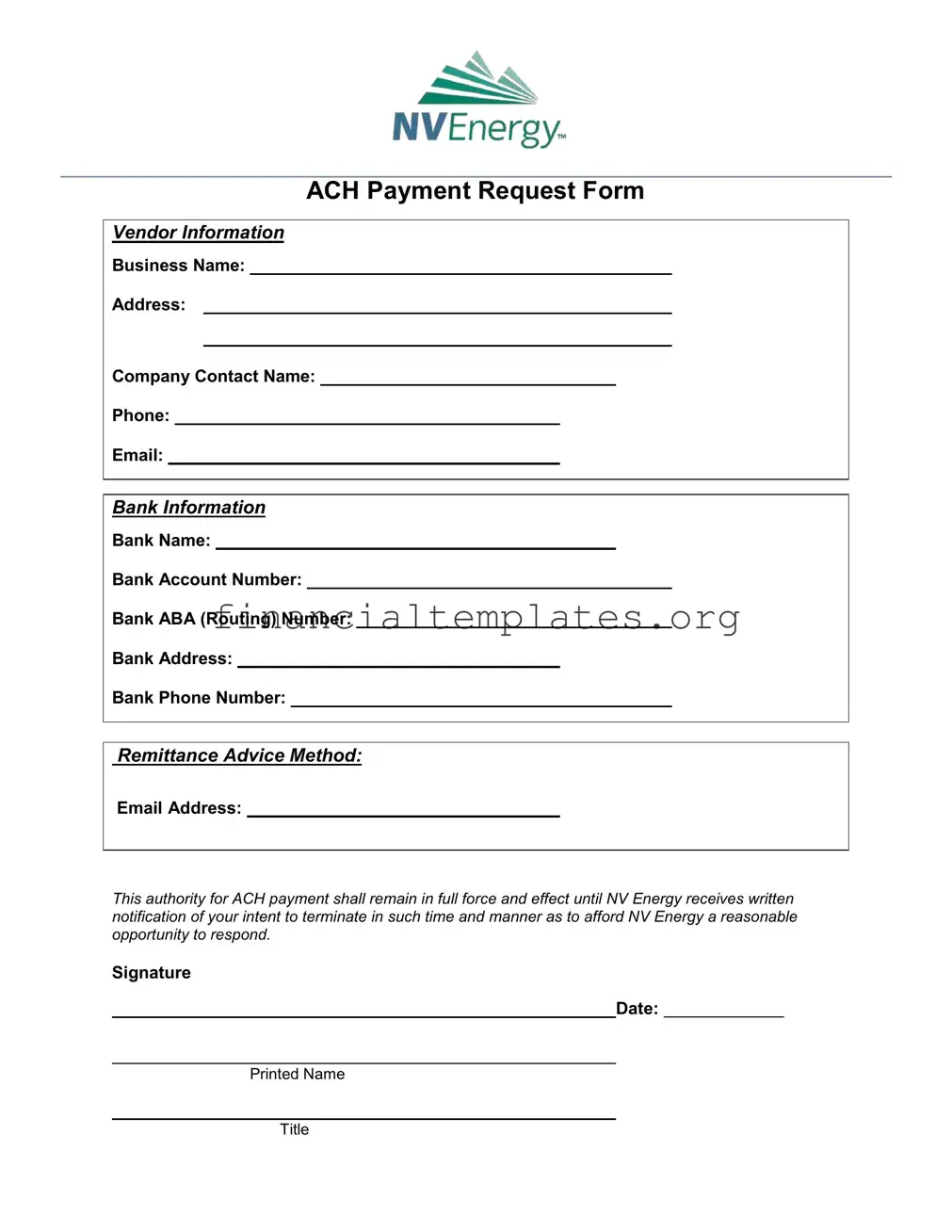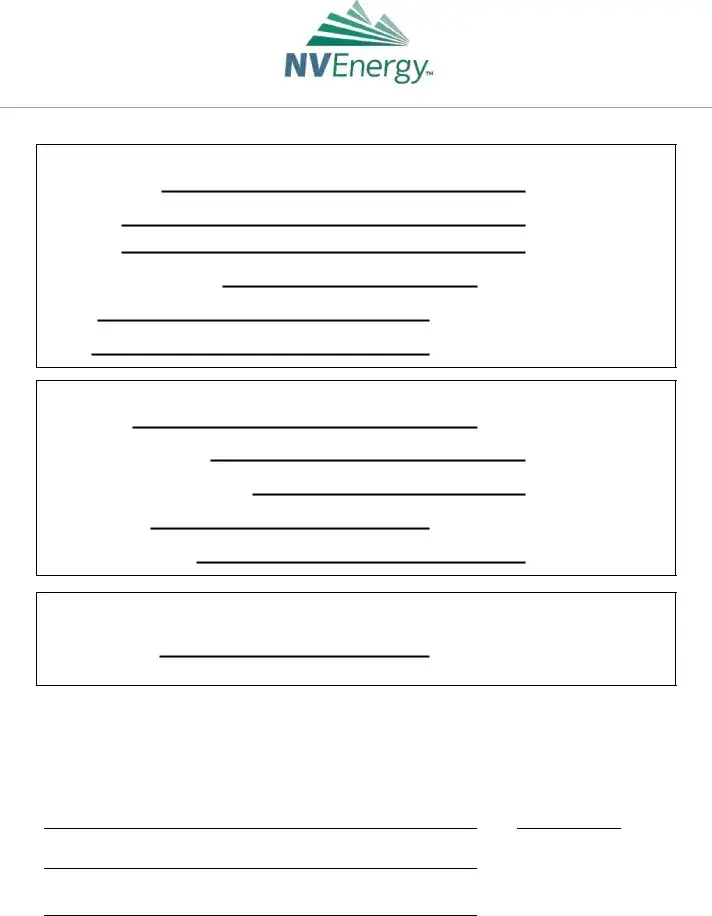An Invoice is fundamentally similar to a Payment Request form. Both documents serve the purpose of requesting payment for services or goods rendered, containing essential details such as the business name, contact information, and specifics about the payment required. An Invoice, however, typically goes into more detail regarding the products or services provided, including quantities, descriptions, and the total amount due, serving as a detailed request for payment after a transaction has already occurred.
A Direct Deposit Form shares similarities with the ACH Payment Request form, particularly in the context of providing bank information to facilitate a transaction. Both forms collect critical financial data, like bank name, account number, and routing number, to enable electronic transfers. The distinct purpose of a Direct Deposit Form is to arrange for the deposit of funds into an individual's account, commonly used for salary or benefits payments, meanwhile, an ACH Payment Request is typically used by businesses to receive payments electronically from customers or clients.
The Wire Transfer Request is another document that bears resemblance to the ACH Payment Request form. It specifically requests the transfer of funds electronically between two bank accounts, leveraging the bank's wire network. Both forms necessitate detailed banking information, including the account and routing numbers, to accurately direct where funds should be deposited or withdrawn. However, wire transfers are generally faster and might involve fees, while ACH is often used for domestic transactions with fewer or no fees.
A Standing Order Mandate is closely related to the ACH Payment Request form, as it allows for regular, scheduled transfers between bank accounts. This document captures bank details similar to the ACH form, to ensure accurate and timely transactions. The key difference lies in the continuity and frequency of payment: a Standing Order Mandate is used to set up recurring payments for an indefinite period until cancelled, whereas an ACH Payment Request is often a one-off or periodic request for funds transfer.
Vendor Setup Forms pair nicely with the notion of the ACH Payment Request form by collecting vendor information and banking details to facilitate payment. These forms are typically used by businesses at the beginning of a vendor relationship to ensure all necessary details are on file for future payments. While a Vendor Setup Form may gather more comprehensive information about the vendor, including tax IDs and business classification, both forms are integral in establishing the foundation for electronic payment transactions.
The Bank Account Verification Letter aligns with components of the ACH Payment Request form, primarily in verifying the ownership and legitimacy of the bank account details provided. This letter, usually issued by the bank, includes the account holder's name, account number, and sometimes the routing number, echoing the banking information captured in an ACH Payment Request. This verification process is crucial for preventing fraud and ensuring the security of electronic financial transactions.
A Payment Authorization Form is another document quite akin to the ACH Payment Request form, particularly in its function to authorize the transfer of funds from an individual or entity’s account. It includes permission for a business to debit an account for a specified amount, quite like how the ACH form allows a vendor to request payment electronically. The authorization is central to both forms, though a Payment Authorization may also be used for recurring billing in addition to one-time payments.
Lastly, the Purchase Order (PO) document, while distinct in its primary function, shares a procedural similarity with the ACH Payment Request form. A PO is issued by a buyer to a seller, authorizing the purchase of goods or services under specified terms and conditions. It precedes the actual financial transaction, setting the stage for a subsequent payment request, which may be fulfilled via an ACH Payment Request form. Here, the link is in the sequence of purchase and payment processes, with each document playing a pivotal role in the procurement and payment cycle.

